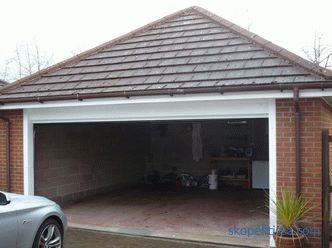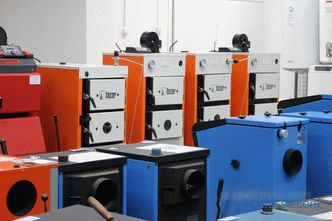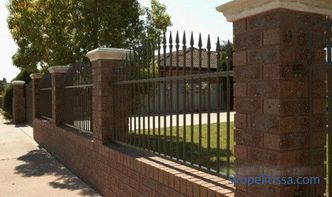Hydraulic impact is called the most common cause of emergency situations in pipelines through which any fluid circulates. Water hammer in the water supply system is a sharp and strong increase in water pressure caused by the rapid change in the rate of its flow. The first signs of this phenomenon are knocks and clicks, dull thumps, the appearance of smudges at the joints of the plumbing system or the current taps. The result of the impact of pressure surges - violation of tightness with the destruction of the pipeline.
Causes of
Knowing what a water hammer is in the water supply system, it is easy to identify the reasons for its occurrence. It should distinguish between negative hydraulic shocks and positive. The first occur when high pressure water enters the pipeline section with a sharply reduced fluid pressure. The second ones, which are more dangerous in their consequences, occur when the pressure rises due to a rapid abrupt increase in the rate of its flow, or vice versa, to stop. In practice, this happens due to:
-
abrupt closure of valves or taps;
-
switching on or off pumping equipment (including situations involving interruption power supply);
-
air traps;
-
the presence of pipes of different diameters.
It is worth noting that with the proliferation of ball constructions of valves and taps, the deterioration of water pipes due to the impact of pressure has become more significant. In contrast to the classical screw design, the ball requires much less time to open / close the valves. To do this, it is enough to turn the handle 90 degrees with one hand movement. And this, of course, faster than a few turns of the valve.
The probability of water hammer is higher, the longer the pipeline and the larger the potential volume fluid that may collect before shut-off valves or at the site of pipe narrowing.
On our website you can find contacts of construction companies that offer the service of calculating and installing water supply and sewage systems. Directly to communicate with representatives, you can visit the exhibition of houses "Low-rise Country".
Consequences of hydraulic shocks
Any incidents with a water supply system are associated not only with material damage for him, but also with the costs of eliminating the effects of water exposure on nearby objects. Especially, it is compounded for pipelines with hot water and under high pressure. In these situations there is even a danger to the health and life of people, pets. They may be scalded or injured. In particular, this negative phenomenon may be followed by the following:
-
destruction of pipe layouts;
-
flooding of residential, administrative and business premises;
-
failure of pumping equipment and valves;
-
damage to furniture, household appliances, computers, and the like;
-
cessation of water supply;
-
destruction of structures of buildings and structures (especially in winter, due to the force of expansion during freezing of moisture);
-
termination of electrical supply;
-
fires due to short Whose circuit electrical wiring.
Accidents on the main networks can cause traffic congestion, in winter the icing, caused by gusts, usually completely blocks the movement of cars for some time.
Prevention and Protection
Prevention and protection against water hammer is based on two things. This is the correct operation and protection from water hammer in the water supply system. The first is primarily to minimize the cases of instantaneous changes in the flow rate, due to incorrect actions of a person. To do this, all the on and off of the pipeline should be made smoothly, ensuring a uniform change in pressure over a certain period of time. Also, preventive measures include checking the system for leaks, regular replacement and cleaning of filters, and checking the performance of the plumbing components.
Clearly the most popular protection against water hammer is described in the following video:
Technical protective equipment
The system should be protected as much as possible from thoughtless human actions, misuse and untimely and incomplete maintenance.To do this, there are a number of technical solutions to minimize the effects of fluid pressure surges in the water supply and heating networks and prevent their occurrence.
Replacing pipes
To do this, it is necessary to revise the entire pipeline; old steel pipes should be replaced with modern ones from polymeric materials. They are more reliable, practically resistant to corrosion and last longer. In this case, the pipes must be chosen taking into account the operating conditions (pressure and temperature in the network) with a small margin in terms of parameters. To reduce the flow rate, it is desirable to choose products with the maximum possible diameter for the head. Find a middle ground.
Replacement of stop valves
Replacement of ball valves with valve You can call it a return to the past, but this will allow you to avoid sudden pressure drops no matter how the stop valves open and close. It is not necessary to change all locking devices, it can be limited only to those that are critical for the system.
It may be interesting! In the article on the following link read about water supply of a private house from a well.
Installation of shock-absorbing elements
The use of inserts made of reinforced plastic or rubber that can stretch or contract during pressure surges will reduce the deforming effects on other parts of the pipeline. The walls of the shock absorbers, in contrast to rigid pipes, do not deform when they are compressed or expanded, and return to their original state, taking the bulk of the impact of the fluid on themselves. For most systems, an area between 20 and 40 centimeters is sufficient.
Use of compensators
Compensators are cylindrical containers (inverted cup) within which there is a spring. One end of it rests on the upper fixed part of the inverted "glass", and the lower - in a movable plastic disc. As the pressure in the system increases, water presses the disk by compressing the spring, while decreasing the elastic force of the spring compensates for the pressure loss.
Compensating protection against water hammer in the water supply system is also carried out using accumulators. This device is a tank of a certain volume divided into two parts (with water and air) with a rubber membrane. In the case of overpressure, it will be discharged into the container due to the stretching of the rubber membrane and reducing the volume of air inside the tank.
The use of pumps with frequency converters
Such pumping equipment by means of automation allows for smooth start and stop of the working parts. This makes it possible to avoid a rapid increase in pressure, which is the cause of water hammer. The frequency converter regulates and sets the number of rotations of the pump wheel per unit of time, by changing the frequency of the alternating current received from the electrical network. The adjustment is made in automatic mode depending on the value of the parameters transmitted by the sensors.
Safety valves
The principle of operation of these devices is quite simple. When reaching the pressure values at the valve installation points above the critical parameters, the valves open and the liquid is discharged.
They can be autonomous devices which can be opened by triggering mechanisms or electronic sensors, or to be part of a system consisting of a variety of sensors and valves, controlled by a computer.
An example of protective equipment for damping water hammer in the water supply system, see the video:
It might be interesting! B article on the following link read about the water system in the country.
Conclusion
Pressure surges or hydraulic shocks are a dangerous phenomenon inherent to the operation of the plumbing or heating systems. It is possible to minimize their number and negative impact with the help of preventive measures and technical solutions. In order to solve this problem in a comprehensive way, as much as possible to prevent the risks of danger to people and material damage, it is better to turn to professionals.
Rate this article, we tried for you


